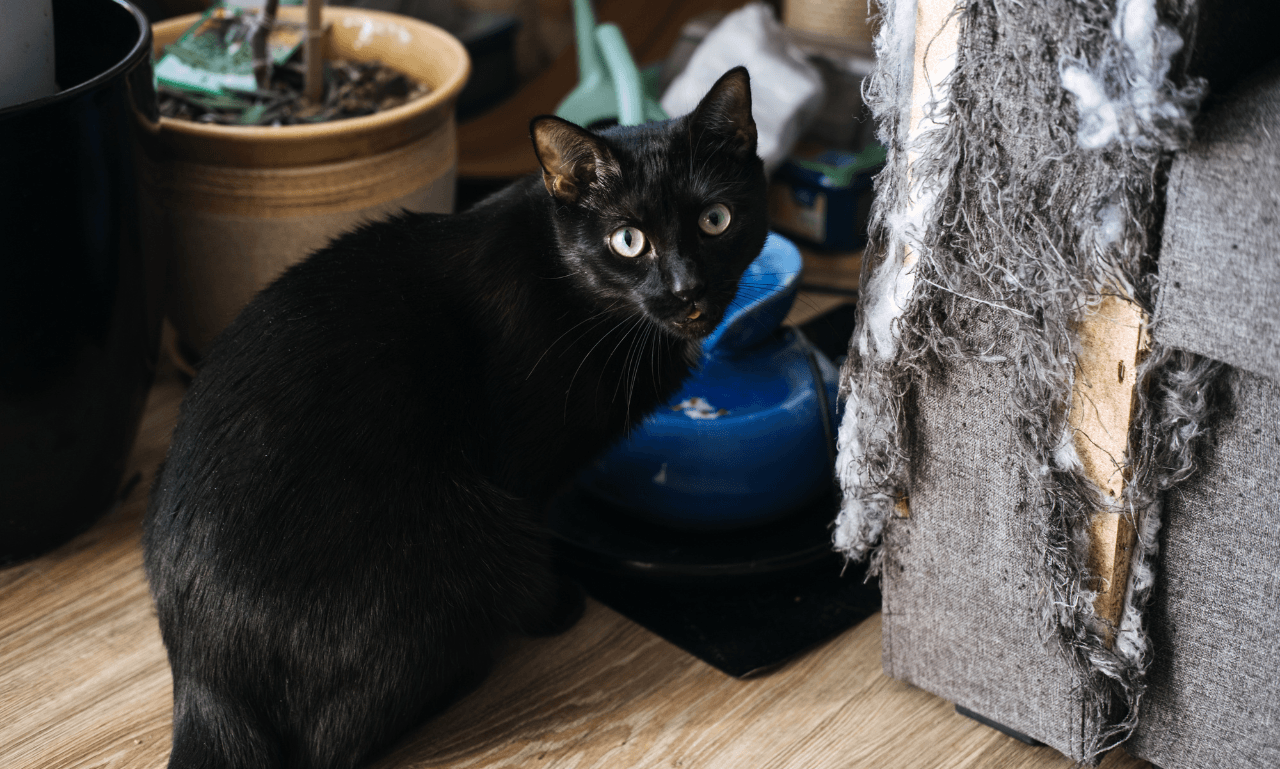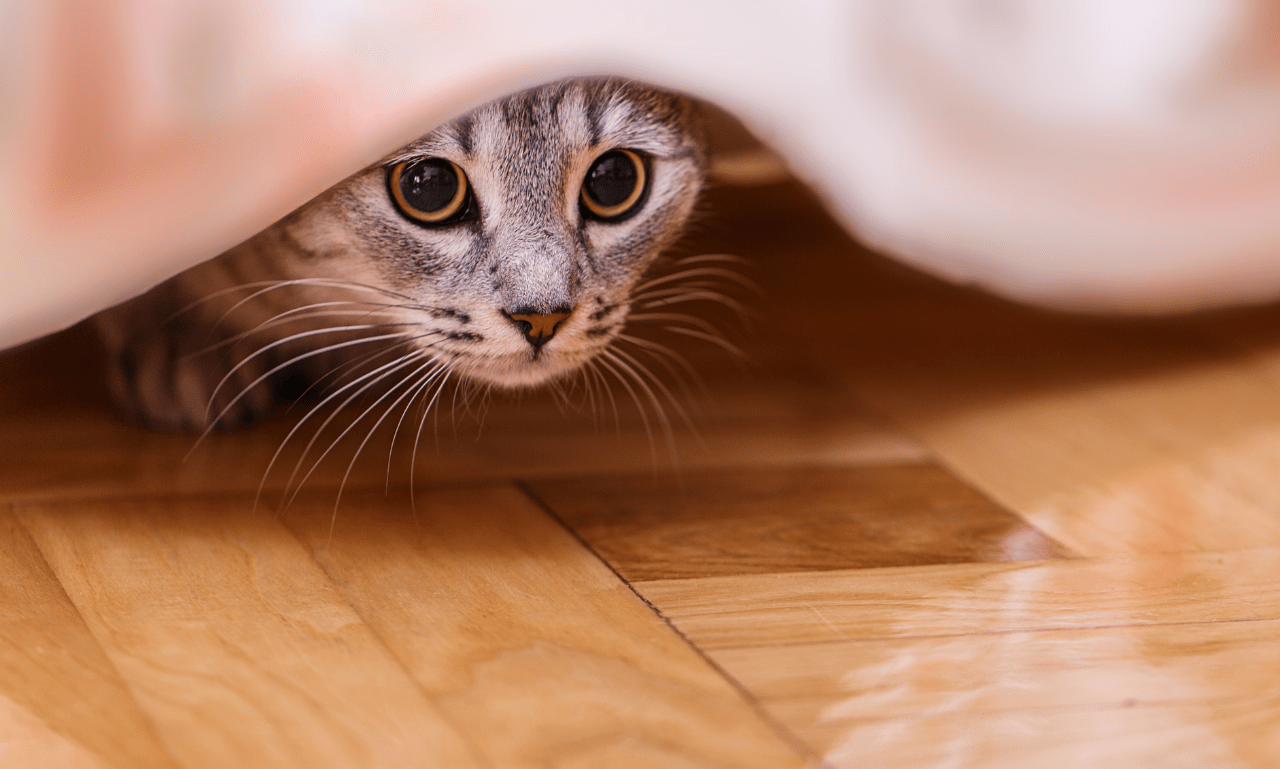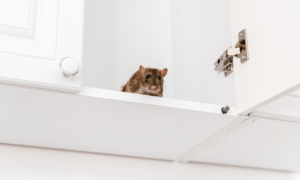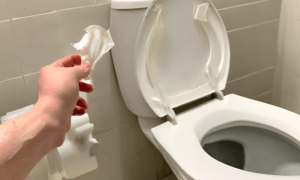Introduction
Navigating Pet Restrictions: The Challenge
Keeping a beloved feline companion in a pet-restricted rental can be challenging. Many renters face the dilemma of wanting to enjoy their cat’s company while adhering to strict landlord policies. This guide explores creative strategies to help you cohabitate with your cat without your landlord knowing, ensuring peace for both you and your furry friend.
Discreet Strategies for Feline Companionship
Discovering discreet strategies for cat ownership in a no-pet rental can make your living situation more comfortable. From understanding lease agreements to making your space cat-friendly, we’ll explore practical solutions for covert cat cohabitation.

Understanding Landlord Pet Policies
Reviewing Your Lease Agreement
Before delving into covert cat-keeping, it’s crucial to understand your lease agreement thoroughly. Look for any clauses related to pets, their restrictions, and the consequences of violating pet policies. Knowing what you’re up against is the first step in devising a successful strategy.
Understanding Lease Agreements
Lease agreements are legally binding contracts between you (the tenant) and your landlord. They outline the terms and conditions of your tenancy, and that often includes rules regarding pets. Here’s what you should focus on when reviewing your lease:
- Pet Clauses: Start by searching for any sections explicitly dedicated to pets. These clauses will detail whether pets are allowed on the property, which types of animals are permitted, and any restrictions or limitations.
- Security Deposits and Pet Fees: Some leases require tenants with pets to pay additional fees or pet deposits. Take note of any extra financial responsibilities associated with having a pet.
- Size and Breed Restrictions: Some landlords may allow pets but impose restrictions based on the size or breed of the animal. Ensure you understand these limitations.
- Rules for Common Areas: Check if there are rules regarding where your pet can and cannot go within the building or complex. Common areas like elevators, lobbies, and gardens may have specific regulations.
- Maintenance and Cleaning Obligations: Your lease may outline your responsibilities for cleaning up after your pet and any damage they may cause to the property.
- Renewal and Termination: Understand how your pet’s presence might affect the renewal of your lease or the possibility of eviction.
Knowing The Consequences of Non-Compliance
Ignoring or violating your lease’s pet policies can lead to severe consequences, including eviction. In this section, we’ll discuss the potential repercussions and legal implications of keeping a cat against your landlord’s rules. Understanding the stakes is vital for making informed decisions.
Potential Consequences
- Eviction: The most serious consequence of violating pet policies is eviction. If your landlord discovers you’re keeping a cat without permission, they may terminate your lease, forcing you to vacate the premises. This can be disruptive and legally binding.
- Financial Penalties: Apart from eviction, landlords may impose financial penalties, such as fines or deductions from your security deposit, to cover any damage caused by your pet.
- Legal Action: In extreme cases, a landlord may take legal action against you for breaching the lease agreement. This could result in a court battle, potentially leading to substantial legal fees and a damaging mark on your rental history.
- Difficulty Finding Future Rentals: If you’re evicted due to pet-related issues, it may be challenging to find a new rental property. Many landlords and property management companies check rental histories, and a prior eviction can make securing a new place more complicated.
Legal Implications
Understanding the legal side of non-compliance is crucial:
- Tenant’s Rights: Familiarize yourself with tenant rights and local laws regarding pet ownership. Some jurisdictions offer protections to tenants with pets, but these rights can vary widely.
- Communication with Landlord: It’s often wise to communicate openly with your landlord if you’re considering getting a pet or already have one. Sometimes, they may be willing to negotiate or amend the lease agreement.
- Seek Legal Advice: If you find yourself in a difficult situation, consult with a legal professional who specializes in landlord-tenant issues. They can provide guidance on your specific circumstances and help you navigate potential legal challenges.

Cat-Proofing Your Space
Creating a Cat-Friendly Environment
Welcome back to our series on cat-proofing your home! In this chapter, we’ll delve into the art of creating a cat-friendly environment that seamlessly blends with your living space. Our aim is to strike a balance between accommodating your feline friend’s needs and keeping your home looking pristine.
Preventing Telltale Signs
While it’s impossible to completely hide the fact that you share your space with a cat, there are ways to minimize the evidence of their presence. Here’s how:
- Scratch Marks and Damage Control:
Cats have a natural instinct to scratch. Instead of trying to suppress this behavior, provide designated scratching posts or pads. Place them strategically near areas your cat frequents, like the living room or near their favorite perch. Invest in furniture with cat-friendly upholstery or use protective coverings to minimize damage.
- Litter Box Solutions:
A well-maintained litter box is essential for a discreet living arrangement. Choose a litter box that blends with your decor, such as enclosed or furniture-style ones. Regularly scoop and clean the litter box to prevent odors. Consider investing in an air purifier with a HEPA filter to keep the air fresh.
- Managing Cat Hair:
Cat hair can find its way into every nook and cranny. To keep it under control, brush your cat regularly to reduce shedding. Use washable furniture covers or throws on your couch and chairs to protect them from hair and dirt. Invest in a good quality vacuum cleaner with HEPA filtration to effectively remove cat hair from carpets and upholstery.
Creating a Cat-Friendly Environment
Now, let’s focus on making your home a paradise for your feline companion while maintaining a stylish and comfortable living space for yourself.
- Vertical Space:
Cats love to climb and explore high places. Install shelves, cat trees, or wall-mounted platforms to give your cat opportunities for vertical exploration. This not only provides mental stimulation but also keeps them away from knocking down your valuables.
- Window Perches:
Cats adore observing the outside world. Place comfortable window perches or shelves near windows so your cat can enjoy bird-watching and the passing scenery. It’s also a perfect spot for catnaps in the sun.
- Interactive Toys and Puzzles:
Keep your cat mentally and physically active with interactive toys and puzzles. Toys that mimic prey, such as feather wands and laser pointers, can provide hours of entertainment. Puzzle feeders are also great for mealtime engagement.
- Cozy Hideaways:
Cats appreciate cozy, quiet spots to retreat to when they need some alone time. Provide soft beds or hideaway caves in different areas of your home so your cat can relax without feeling exposed.
- Cat-Friendly Decor:**
When choosing decor, opt for cat-friendly materials and designs. Avoid delicate fabrics that can easily be scratched or ruined by your cat’s claws. Leather or microfiber can be more durable choices. Incorporate cat-themed art or decor that celebrates your love for your feline friend.
- Safety First:
Ensure your home is safe for your cat by securing toxic substances, covering electrical cords, and removing any hazardous objects or plants from their reach. This not only protects your cat but also preserves the integrity of your home.
By following these tips for preventing telltale signs and creating a cat-friendly environment, you’ll find that living harmoniously with your feline companion is not only possible but also enjoyable. In the next chapter, we’ll dive into the importance of proper nutrition and healthcare for your cat. Stay tuned for more valuable insights on providing the best possible life for your furry friend!

Concealing Your Cat’s Presence
Part 1: Clever Camouflage Ideas
Welcome back to our guide on maintaining a discreet feline presence in your home. In this section, we’ll explore some imaginative and effective camouflage ideas to ensure your cat remains inconspicuous. Whether you’re looking to keep your cat’s activities low-key or simply want to maintain a harmonious living situation with non-feline housemates, these tips will help you achieve just that.
1. Concealed Cat Furniture
One of the best ways to keep your cat’s presence discreet is by investing in concealed cat furniture. These pieces of furniture are designed with both your cat’s comfort and your home’s aesthetics in mind. Some options include:
– Hidden Litter Boxes: These look like regular pieces of furniture, such as cabinets or end tables, but inside, they conceal your cat’s litter box. Guests will never suspect a litter box is hidden right in plain sight.
– Camouflaged Cat Trees: Choose cat trees that blend seamlessly with your home decor, making them less noticeable. Cats can enjoy their favorite perching spots while you maintain the overall aesthetics of your living space.
– Furniture with Built-in Hideaways: Look for couches, chairs, or shelves that incorporate cozy hiding spots for your cat. These can serve as both a comfortable retreat and a clever hiding spot.
2. Discreet Feeding Stations
Mealtime can often reveal your cat’s presence, but there are ways to keep it under wraps:
– Built-in Cat Feeding Drawers: Create a dedicated feeding station for your cat by converting a drawer or cabinet. This conceals food and water dishes and prevents them from becoming an eyesore.
– Wall-Mounted Feeding Shelves: Install wall-mounted shelves with integrated cat food and water bowls. These can be stylishly integrated into your home decor.
Part 2: Noise Control for a Silent Kitty
While cats are generally known for their stealthy nature, some cats can be quite noisy, especially during playtime or when they’re in heat. To prevent your cat’s vocalizations from drawing unwanted attention, consider these noise control strategies:
1. Quieter Cat Toys
Select toys that are designed to be less noisy. Toys made from soft materials or with sound-dampening features can reduce the racket during playtime.
2. Soundproofing Your Living Space
To maintain a peaceful environment and prevent complaints from neighbors or housemates, you can take steps to soundproof your home:
– Weatherstripping: Seal any gaps around doors and windows with weatherstripping to minimize noise leakage.
– Rugs and Curtains: Add thick rugs and heavy curtains to absorb sound and reduce echoes in rooms where your cat spends the most time.
– White Noise Machines: Consider using white noise machines to drown out any sudden noises your cat might make.
– Designated Play Areas: Create a designated play area for your cat that’s isolated from the main living space. This can help contain noise.
A quieter cat not only ensures a less detectable cat but also promotes a peaceful coexistence with those around you. By implementing these camouflage and noise control ideas, you can maintain a harmonious living environment while enjoying the company of your feline friend. Stay tuned for more tips in our quest to master the art of concealing your cat’s presence.

Maintaining a Clean and Odor-Free Home
Effective Cleaning Techniques
Keeping your rental clean and odor-free is essential not only for your own peace of mind but also to avoid any suspicion from your landlord or neighbors. In this chapter, we will discuss a range of effective cleaning techniques specifically tailored to tackle cat-related messes. By following these guidelines, you can ensure that your home remains inviting and free from any lingering odors associated with your feline companion.
Litter Box Maintenance
The litter box is ground zero for cat-related messes, and proper maintenance is key to keeping your rental pristine. Here are some essential tips:
- Regular Scooping: Scoop the litter box at least once a day to remove clumps and waste. This not only keeps your cat’s restroom clean but also minimizes odors.
- Quality Litter: Invest in high-quality clumping cat litter, as it is more effective at trapping odors and easier to clean.
- Litter Box Liners: Consider using disposable or washable liners to make cleaning the box easier and prevent urine from seeping into the bottom.
- Baking Soda: Sprinkle a thin layer of baking soda at the bottom of the litter box before adding fresh litter. Baking soda helps neutralize odors naturally.
- Deep Cleaning: Every few weeks, empty the entire box, wash it with a mild detergent, and replace the litter. This thorough cleaning prevents the buildup of persistent odors.
Stain Removal
Accidents happen, and when they do, it’s crucial to address stains promptly and effectively. Here’s what you need to know:
- Blot, Don’t Rub: When dealing with fresh stains, blot the area with a clean cloth or paper towels to absorb as much moisture as possible. Avoid rubbing, as it can push the stain deeper into the fabric or carpet fibers.
- Enzymatic Cleaners: Invest in enzymatic cleaners specifically designed to break down cat urine and feces. Follow the product’s instructions carefully.
- Test First: Before applying any cleaner, test it on a small, inconspicuous area to ensure it won’t damage the material.
- Carpet Shampooing: For carpeted areas, periodic shampooing can help remove deep-set stains and odors. Consider renting a carpet cleaner or hiring a professional service for a thorough job.
Odor Control
Eliminating and masking cat odors is crucial to maintaining a harmonious living environment. Here are some effective methods:
- Natural Remedies: Consider using natural remedies like white vinegar or lemon juice mixed with water to neutralize odors. These substances are safe for both your cat and your home.
- Air Purifiers: Invest in a high-quality air purifier with a HEPA filter. It will help remove airborne particles, including pet dander and odor molecules.
- Room Fresheners: Use natural room fresheners like essential oil diffusers or potpourri to add pleasant scents to your home. Be cautious with commercial air fresheners, as some may contain chemicals harmful to cats.
- Ventilation: Keep your home well-ventilated by opening windows and using fans. Good airflow helps disperse odors and maintain a fresh atmosphere.
By following these effective cleaning techniques and odor control tips, you can ensure that your rental remains clean and odor-free, making it less likely to raise red flags with your landlord or neighbors. A well-maintained and fresh-smelling home is not only inviting but also a testament to your responsible pet ownership.

Preparing for Inspections and Unexpected Visits
Routine inspections are a common occurrence in the life of a tenant, and for those who share their living space with a furry feline friend, they can sometimes be a source of stress. In this chapter, we will explore strategies to help you prepare for both planned inspections and those surprise visits from your landlord. By being proactive and discreet, you can ensure a smooth experience for you and your cat, while also maintaining a good relationship with your landlord.
Strategies to Prepare for Routine Inspections
Routine inspections are typically scheduled in advance, giving you some time to prepare. Here are some essential strategies to help you get ready:
- Temporary Cat Relocation: If your landlord has a “no pets” policy or you know they are not fond of cats, consider temporarily relocating your cat during the inspection. Reach out to a trusted friend, family member, or even a local pet boarding facility to provide a safe and comfortable place for your cat to stay during the visit. Ensure your cat has enough food, water, and familiar items to reduce stress during this temporary separation.
- Deep Cleaning: Before the inspection, thoroughly clean your apartment or house. Pay special attention to areas where your cat spends most of their time. Vacuum carpets, sweep and mop floors, and wipe down surfaces to remove any cat hair or odors. This will not only make your space more presentable but also minimize evidence of your cat’s presence.
- Air Fresheners: Use air fresheners or pet-friendly odor eliminators to keep your home smelling fresh. This can help mask any lingering odors that your cat might leave behind.
- Conceal Cat Accessories: Hide your cat’s litter box, food bowls, toys, and scratching posts in a closet or under a piece of furniture. The goal is to make it less obvious that a cat lives in your home.
Handling Surprise Landlord Visits
Unexpected visits from your landlord can be stressful, but with a few quick-response strategies, you can manage the situation calmly and discreetly:
- Designated Cat Area: Create a designated area where your cat can stay when you need to quickly hide them during a surprise visit. Use a bedroom or bathroom and ensure it’s well-ventilated and comfortable for your cat.
- Keep a Cat Carrier Handy: Have a cat carrier or travel crate readily accessible. In case of an unexpected visit, gently and quietly place your cat in the carrier and move them to the designated area. Be sure to provide some comfort items, like a blanket or toy, to ease your cat’s anxiety.
- Stay Calm and Polite: If your landlord arrives unexpectedly and you need to hide your cat, stay calm and polite. Explain that you weren’t expecting them and need a moment to prepare for their visit. This can buy you some time to discreetly secure your cat in the designated area.
- Follow Up: After the visit, remember to follow up with your landlord if necessary. If they had specific concerns or issues, address them promptly to maintain a good tenant-landlord relationship.
By implementing these strategies, you can navigate both routine inspections and unexpected landlord visits with ease while ensuring your cat’s safety and well-being. Maintaining open communication with your landlord and being proactive in preparing for inspections will help you maintain a harmonious living situation for you and your furry companion.
Conclusion
Balancing Your Love for Your Cat with Lease Obligations
In conclusion, living with a cat in a pet-restricted rental requires a delicate balance. By understanding your lease agreement, creating a cat-friendly environment, concealing your cat’s presence, maintaining cleanliness, and preparing for inspections, you can enjoy the company of your feline friend without violating lease obligations.
Keeping Kitty’s Presence a Well-Kept Secret
Your cat’s well-being and happiness are essential, but so are your responsibilities as a tenant. With these strategies, you can maintain a harmonious living situation that allows you to cherish your cat’s companionship while honoring your lease agreement.
If you’re curious about potential hazards at home, check out our article on ‘Lava Lamps and Fire Safety: Are They a Potential Hazard?‘ to stay informed and safe.















